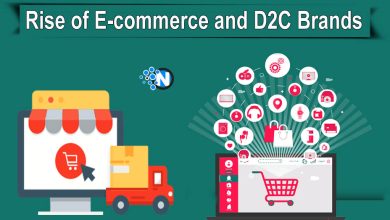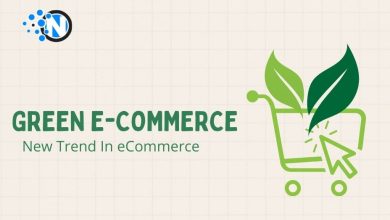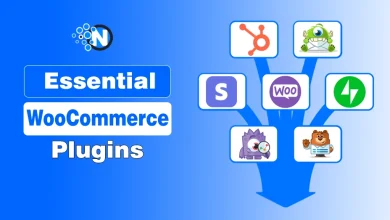Why Mobile App Builders Are Essential for Shopify Stores

Mobile traffic is no longer a luxury or thing of the future. It is currently the default shopping route for most shoppers. While your online store may look good on mobile, leading brands are creating fast, engaging app experiences. That’s where Shopify-focused app builders excel: they cut build time, reduce cost, and deliver features that keep customers coming back.
In this article, I’ll explore why mobile app builders have become vital for Shopify stores. From rising mobile commerce numbers to real case studies, you’ll see how apps boost engagement, streamline operations, and open new marketing opportunities, all while staying cost-effective and scalable.
The Rise of Mobile Shopping
So, why create a mobile application using an app builder like the Shopify mobile app builder? The reason is simple: Shoppers are buying on phones more than ever. They find it easier to browse and shop for products from anywhere using mobile apps. During the 2024 holiday season, smartphones drove 54.5% of online purchases in the U.S., as reported by Adobe Analytics.
Globally, mobile commerce continues to expand at a steady pace. Mobile e-commerce sales are reaching trillions of dollars and rising year over year. If you sell on Shopify, the momentum is clear, too: merchants generated $11.5 billion in Black Friday Cyber Monday 2024 sales. This shows how much volume now flows through Shopify ecosystems that are heavily mobile-first.

The Benefits of Mobile Apps for Shopify Stores
A good app turns casual scrollers into repeat buyers. Push messaging creates reasons to return, saved login and one-tap checkout remove friction, and native performance tightens the loop from discovery to purchase. App builders package all of this without a lengthy custom development cycle to provide businesses with these benefits:
Increased Customer Engagement
Mobile apps have an edge over mobile websites when it comes to drawing shoppers back. Having your brand visible on a customer’s home screen keeps you top of mind. Features like push notifications, in-app promotions, and personalized product feeds create a direct line that encourages more frequent visits and purchases.
A noteworthy example comes from Thrive Causemetics, a U.S. beauty brand that shifted to a Shopify app. After launching mobile-driven campaigns via Shopify’s “Shop” ecosystem and app integrations, the company reported a 13× increase in orders via the Shop app compared to baseline levels. This highlights how the immediacy of app-based engagement fuels real growth in engagement and conversions.
A Relief in the Development Process
Traditionally, launching an iOS and Android app meant separate codebases, deep native skills, and long timelines. Shopify app builders abstract that work. They sync your product catalog, collections, customer accounts, discounting, and checkout.
They ship with pre-built UI blocks, analytics, and integrations. Your team configures and ships. Then iterates. The result is speed without sacrificing the basics, account authentication, cart, and payments that map cleanly to your Shopify backend.
A Cost-Effective Approach
A from-scratch app can strain budgets. Builders compress costs using proven components, hosted infrastructure, and Shopify-ready integrations. You pay a predictable platform fee rather than funding two full native builds and ongoing maintenance.
Consider the opportunity cost too: the sooner you ship, the sooner you can test merchandising, refine onboarding, and drive repeat orders during peak events where mobile demand spikes.
Enhanced Marketing Opportunities
A mobile app opens new avenues for connecting with customers that go far beyond standard email or social campaigns. Owning a mobile app expands your channel mix. You get:
- Push Notifications: To announce launches, price drops, and back-in-stock alerts
- In-App Banners: tied to collections or bundles
- Deep Links: Taking shoppers from email, SMS, Instagram, or TikTok to the product screen instead of a generic homepage
- First-Party Data: To personalize timing and offers
Apps also generate first-party data, showing how, when, and why customers engage. That insight helps refine promotions, timing, and messaging. During high-volume shopping periods, this type of targeted access can drive stronger engagement and more conversions.
Better Customer Insights
App sessions expose richer signals: install source, open rates, opt-in push behavior, feature usage, even on-device search patterns. Paired with Shopify order data, you can segment by lifetime value, frequency, and category interest. That supports smarter retention plays. It also makes testing straightforward: tweak onboarding flows, try a new PDP layout, or adjust the cart step, and measure cohort impacts quickly.
Streamlined User Experience
Speed converts. Apps cache assets, keep sessions alive, and load PDPs and carts with less friction than most mobile sites. Native gestures and autofill shorten the path to purchase. Faster flows show up in the metrics: higher add-to-cart rates, better checkout completion, and more active users month to month.
More Scalability and Flexibility
Shopify app builders make it easier to grow without starting over from scratch. They bring your existing collections and product pages into the app environment, keeping a consistent look and feel. Popular integrations for subscriptions, loyalty programs, and customer reviews plug in smoothly, so the features shoppers rely on stay intact.
Content and design updates can be published quickly, even by non-technical team members, while built-in A/B testing and analytics help refine the experience as traffic increases. As your store expands into new regions, these tools let you adapt with localized content, currencies, and promotions for each market.
Final Thoughts
If your store serves a mobile-first audience, a Shopify app can be a practical way to raise engagement, conversion, and repeat purchase while keeping development lean. App builders give you the building blocks: native performance, push messaging, clean product feeds, and checkout that keeps people moving.
The market data clearly backs the move, and the case studies show what’s possible. So, start with a test group, launch core features, and let the metrics guide your next sprints. Mobile is already at the center of online shopping; your app should be too.




